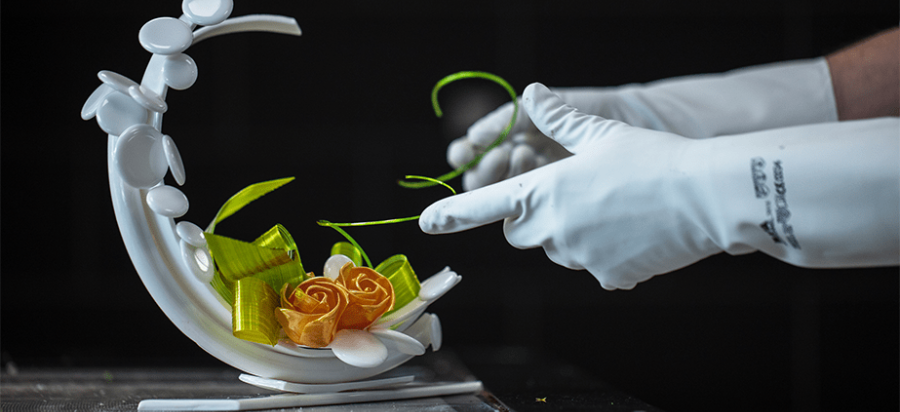The chemistry of cooking: turning ingredients into delicious science
Whenever we hear the terms chemical changes or chemical reactions, the first thing that comes to our mind is explosions or experiments performed in the laboratory. Most chemical reactions that occur in our everyday life are very subtle. Chemistry has never been considered by most of us as a fun-filled study.
Cooking is often seen as an art form, with chefs as artists who craft delectable dishes through their culinary skills. However, beneath the surface of sizzling pans and simmering sauces lies a fascinating world of chemistry. Every dish you prepare involves complex chemical reactions and transformations that turn raw ingredients into mouth-watering masterpieces. Here, we’ll explore the science behind cooking and how chemistry plays a pivotal role in creating the flavors and textures that make our meals so enjoyable.
Mixing and blending food ingredients often give rise to chemical reactions in the kitchen, out of which many could be beneficial in cooking. Understanding the reason behind each of these reactions will help you cook better.
The Maillard Reaction: The Secret to Flavorful Browning
One of the most crucial chemical reactions in cooking is the Maillard reaction. This reaction occurs when proteins and sugars in food are exposed to high heat, resulting in browning and the development of complex flavors and aromas. It’s responsible for the golden crust on bread, the sear on a steak, and the rich flavors of roasted coffee beans. Understanding the Maillard reaction helps chefs achieve the perfect balance of flavors and textures in their dishes.
Caramelisation
Most of us love the taste of caramelized food. Caramelization is a slow cooking procedure that happens when you cook sugar over low heat, changing the build and flavor of the item being cooked. Through pyrolysis, the sugar in the food gets oxidized, turning into a brown color. The sugar is observed to melt, boil, produce foam, and darken through this process. Caramelized sugar has a rich, slightly sweet, but nutty flavor.
Emulsions: The Art of Mixing Oil and Water
Creating stable emulsions is a fundamental concept in cooking, particularly in sauces and dressings. Emulsions are mixtures of two immiscible liquids, like oil and water, held together by an emulsifying agent. Mayonnaise, vinaigrettes, and hollandaise sauce all rely on the chemistry of emulsions. The molecules in the emulsifying agent act as intermediaries, allowing oil and water to coexist harmoniously, resulting in creamy and luscious textures.
Rising and Leavening: The Magic of Baking
Baking is a precise science, and it hinges on chemical leavening agents like baking powder and yeast. These agents release carbon dioxide gas when mixed with liquid and exposed to heat. The gas bubbles expand, causing dough or batter to rise, resulting in fluffy bread, cakes, and pastries. The timing and measurement of these reactions are critical for achieving the desired texture and taste.
The Role of Acids and Bases
Acids and bases are essential players in cooking, influencing the taste and texture of dishes. For instance, acids like lemon juice or vinegar can tenderize meat and brighten flavors, while baking soda is used as a leavening agent in recipes that require an alkaline environment. Controlling the pH of a dish can be the difference between a perfect and a lackluster result.
Protein Denaturation: Transforming Raw to Cooked
When you cook proteins, whether it’s in eggs, meat, or fish, you’re causing a fundamental change in their structure. Proteins denature when exposed to heat, and this process alters their texture and appearance. Think of the transition from clear, raw egg whites to solid, opaque whites when making an omelet. The precise temperature at which denaturation occurs can significantly impact the outcome of a dish.
Conclusion
Cooking is indeed a delicious science, where chemical reactions and transformations create the flavors, textures, and appearances we associate with our favorite dishes. Understanding the chemistry behind cooking not only empowers home cooks to experiment and innovate but also deepens our appreciation for the culinary arts. The next time you savor a perfectly seared steak or a freshly baked loaf of bread, remember that it’s not just the chef’s skills at play—it’s also the fascinating chemistry that turns ingredients into delightful dining experiences. So, embrace the science in your kitchen and enjoy the culinary journey that combines artistry and chemistry on your plate.
Sources
- https://www.ecoleducasse.com/en/blog/science-of-cooking
- https://www.vedantu.com/blog/chemistry-in-kitchen
- https://www.nature.com/articles/486S10a

